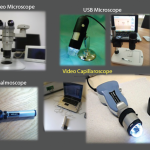Study Details
Dr. Cutolo says other clinicians could readily adopt his study’s relatively straightforward cell characterization method. For the flow cytometry analysis, he and colleagues assessed 58 consecutive SSc patients and 27 age- and gender-matched healthy controls. The researchers collected peripheral blood from each study subject and used anti-CD14 and anti-CD45 antibodies to separate out the monocyte/macrophage lineage. Their analysis then used the CD163, CD204 and CD206 cell surface receptors as M2 phenotypic markers and the CD80, CD86, toll-like receptor (TLR) 2 and TLR-4 receptors for the M1 phenotype.
The macrophage phenotype results, which report the target cells as a percentage of the total number of circulating leukocytes, supported past associations between SSc patients and the M2 phenotype. Even so, they more clearly pointed to an association between the disease and a mix of cells expressing both M1 and M2 surface markers. By contrast, the analysis revealed no difference in the percentage of circulating M1 cells between the SSc patients and healthy controls.
The second study, led by Alain Lescoat, MD, Department of Internal Medicine at Rennes University Hospital in Rennes, France, took a different approach. Instead of circulating monocytes and macrophages, the researchers used macrophage-colony stimulating factor (M-CSF) to differentiate resting blood monocyte-derived macrophages (MDM) from a smaller cohort of SSc patients and matched controls. The group’s flow cytometry approach measured the mean of fluorescence intensity (MFI) ratio for cells expressing a slightly different mix of six polarization markers: CD163, CD204, CD206 and CD200R1 for M2 macrophages; and CD80 and CD169 for M1 macrophages.
Again, the results revealed a mixed M1/M2 signature for macrophages in the SSc patients. Despite the potential limitations of the small sample size, the authors wrote that they agreed with the suggestion by Dr. Cutolo’s research group to “think outside the box: beyond the dichotomous M1/M2 paradigm, using new phenotyping approaches may offer a more encompassing vision of macrophages in SSc.”
Dr. Cutolo says he was “very happy” to see the results of Dr. Lescoat’s study reinforce his own group’s findings.
In effect, Dr. Pioli says, the similar discoveries could open the door to additional prognostic and therapeutic markers. The relative expression levels of surface markers associated with M1 or M2, she agrees, may yield a more useful indication of how the disease is progressing and responding to interventions. “I think that looking at different levels of expression of these markers might be useful therapeutically if we can figure out interventions that are associated with down-regulation of some of these monocytes and macrophages that are potentially mediating fibrotic activation in the disease,” she says.
The emerging data may aid a closer examination of the underlying pathways as well, Dr. Pioli says. “The value is that once we figure out which cells these are that are potentially being pathogenic, we can then figure out what they’re making that’s inducing the fibroblast to become activated. Then we can really begin to discern some of the molecular mechanisms behind the way they’re actually inducing fibrosis in the disease.”

